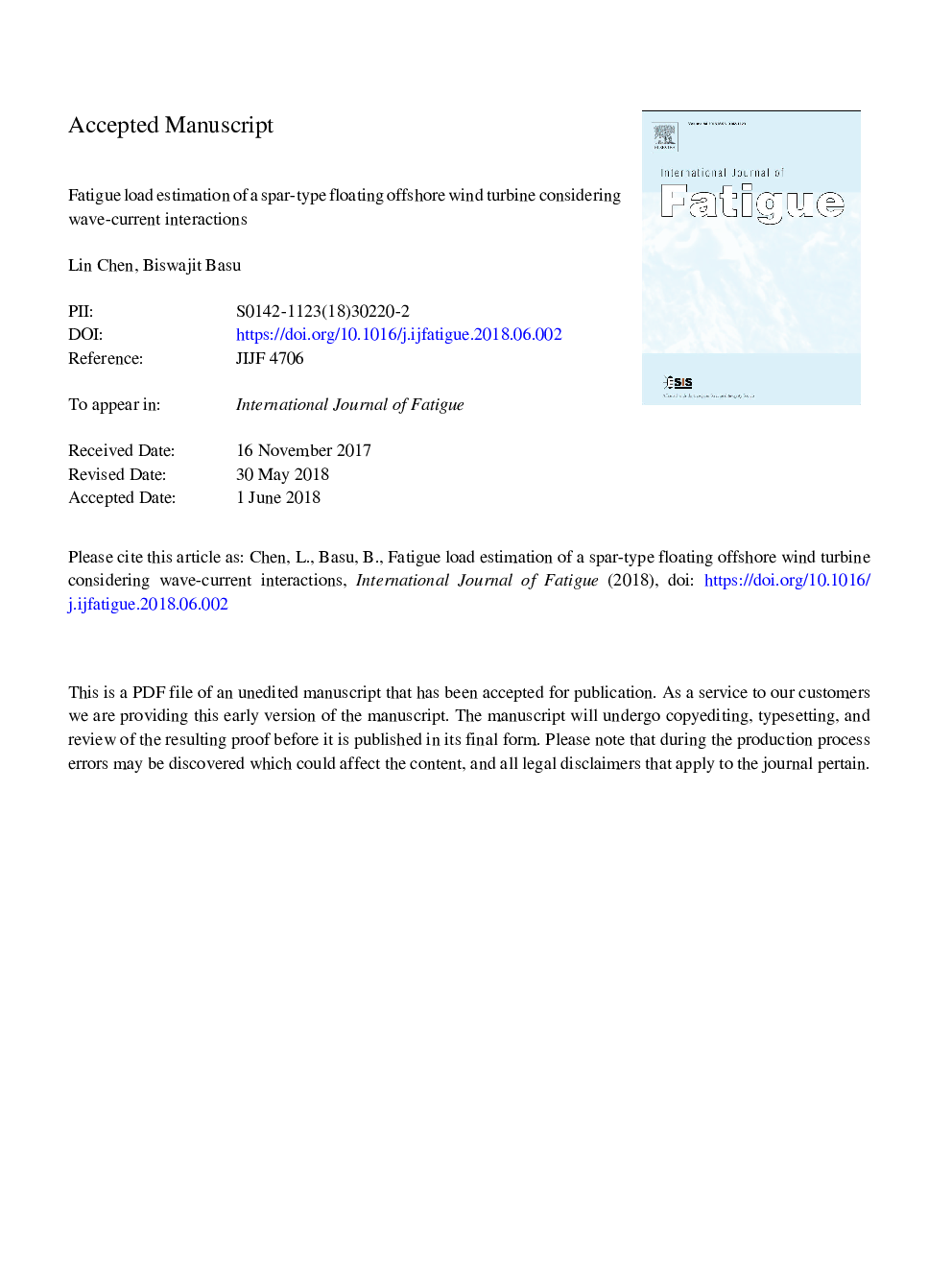| Article ID | Journal | Published Year | Pages | File Type |
|---|---|---|---|---|
| 7171290 | International Journal of Fatigue | 2018 | 15 Pages |
Abstract
This paper considers the effects of current and wave-current interactions in fatigue analysis of floating offshore wind turbines (FOWTs). Surface water waves experience frequency shifts and wave shape modification when traveling on underlying currents. The wave-current interactions are known to be important for the responses of offshore structures, however, they have not been considered in FOWT fatigue analysis. To include such interactions, a nonlinear mooring hydrodynamics model is presented which is able to consider the cable geometric nonlinearity, seabed contact, and the current effect. The mooring model is then coupled with a spar-type FOWT model which simulates the structural dynamics of turbine blades and tower; aerodynamics of the wind-blade interaction and wave-current actions on the spar. Analytical wave-current interaction models based on Airy's theory considering the current effect are applied for generating the flow field. Based on a spar-type FOWT and the wave-current interaction model, numerical simulations have been performed for three cases with only waves, wave and current without and with interactions. The comparison of the structural responses shows that the current and the wave-current interaction can have significant influences on FOWT tower and cable responses. Furthermore, cable fatigue life is estimated for two particular cases when the cable tension is decreased and increased respectively due to the presence of current. It is found that if the current tends to increase the cable tension, neglecting the current and wave-current interactions leads to overestimate of the cable fatigue life.
Related Topics
Physical Sciences and Engineering
Engineering
Mechanical Engineering
Authors
Lin Chen, Biswajit Basu,
